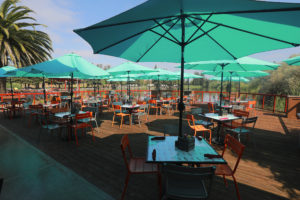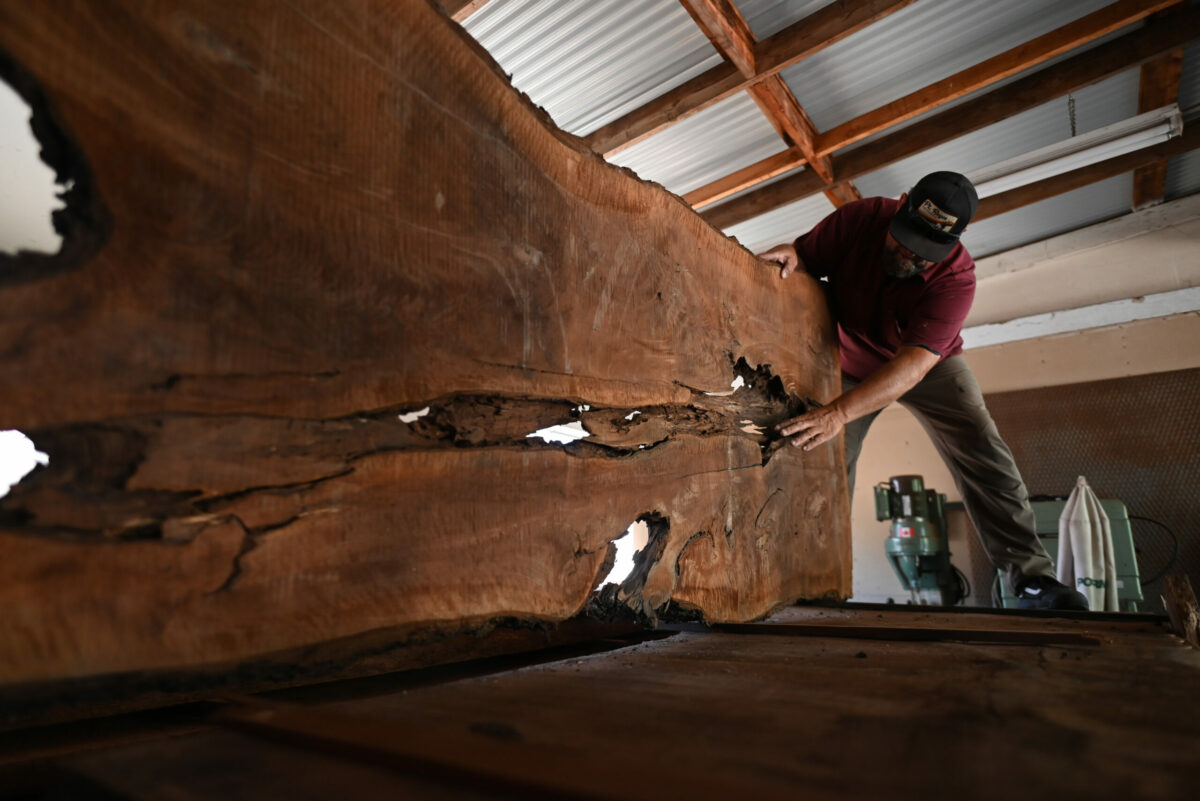To an untrained eye, the stacks of wood from 19th century old-growth redwood wine tanks in Jesse Almos’s Rincon Valley workshop might look like something you’d take to the landfill, or put on the curb, hoping someone might haul it away.
But to Almos, the owner of Sonoma Woodworks, these stacks are as good as gold. His workshop is piled high with slabs of walnut and oak, often salvaged after wildfire, each one awaiting a magical transformation into a custom dining table, bench, or cutting board. Many of the trees might otherwise have been left to rot or die in place—or even cut up for firewood.
In many ways, Almos is like a rescue organization for local trees. He almost never sources the wood for his projects from freshly cut trees or from purchased sources. Instead, he reclaims his material from trees left behind due to wildfires, disuse, abandonment, or neglect. He’ll take what is left behind, mill it on-site, then patiently wait until the wood is properly dried and aged, often as long as five years. Only then, sometimes years later, will he begin to craft the material into beautiful pieces destined for forever homes.
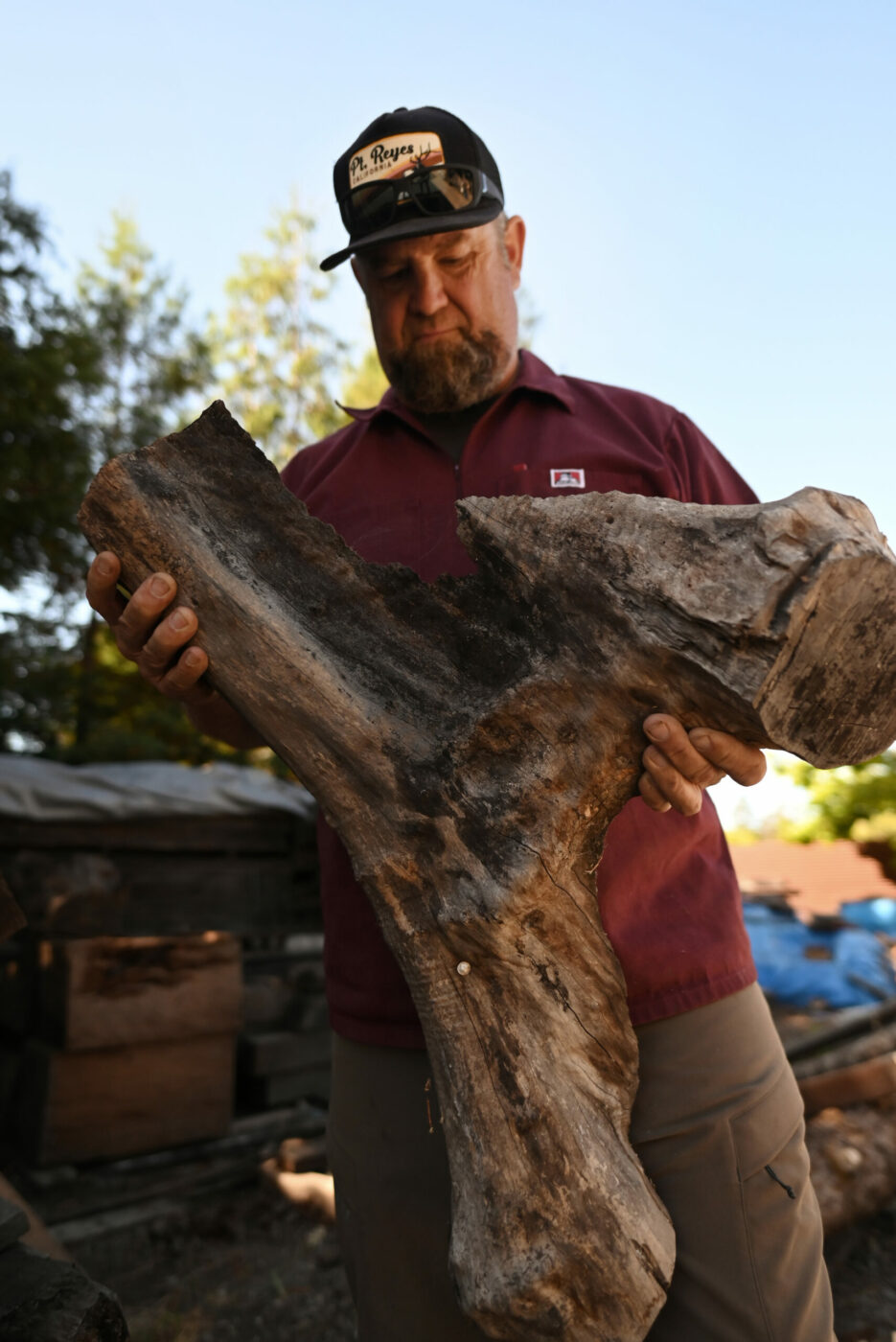
A native of Santa Rosa with a deep connection to craft, Almos started working with wood at a young age. When he was 5 years old, his parents separated, and his father told him that he would need to be “the man of the house.” It was an old-fashioned message, but one Almos took to heart, crafting simple benches and other small household items—even a fort for his friends. By the time he was 12, he was making and selling skimboards: flat, oval-shaped boards used for gliding across small waves as they break across the sands. “Everyone in my neighborhood had my skimboard,” Almos recalls, smiling.
A years-long childhood friendship led to the growth of Almos’s skills. Growing up, Almos’s best friend was the grandson of Henry Trione, a key figure in Sonoma history who preserved much of what is now Trione-Annadel State Park. Almos and his friend spent many hours camping and exploring the Trione family’s sprawling Mendocino County ranch.
Much of the old-growth redwood Almos uses today comes from the Trione Winery’s abandoned redwood wine tanks in Geyserville. He still visits the ranch, and harvests wind-fallen trees for his craft. “I’m blessed to be able to get these old wine tanks from the Trione family and build beautiful furniture from it,” he says.
“All that old-growth redwood was once wine tank wood that was basically going to be discarded,” Almos says. “It was sitting out in the vineyards, and their vineyard manager says, ‘Do you want it? I’m going to burn it if you don’t take it.’ And it’s like the most beautiful wood ever. That wood is California history.”
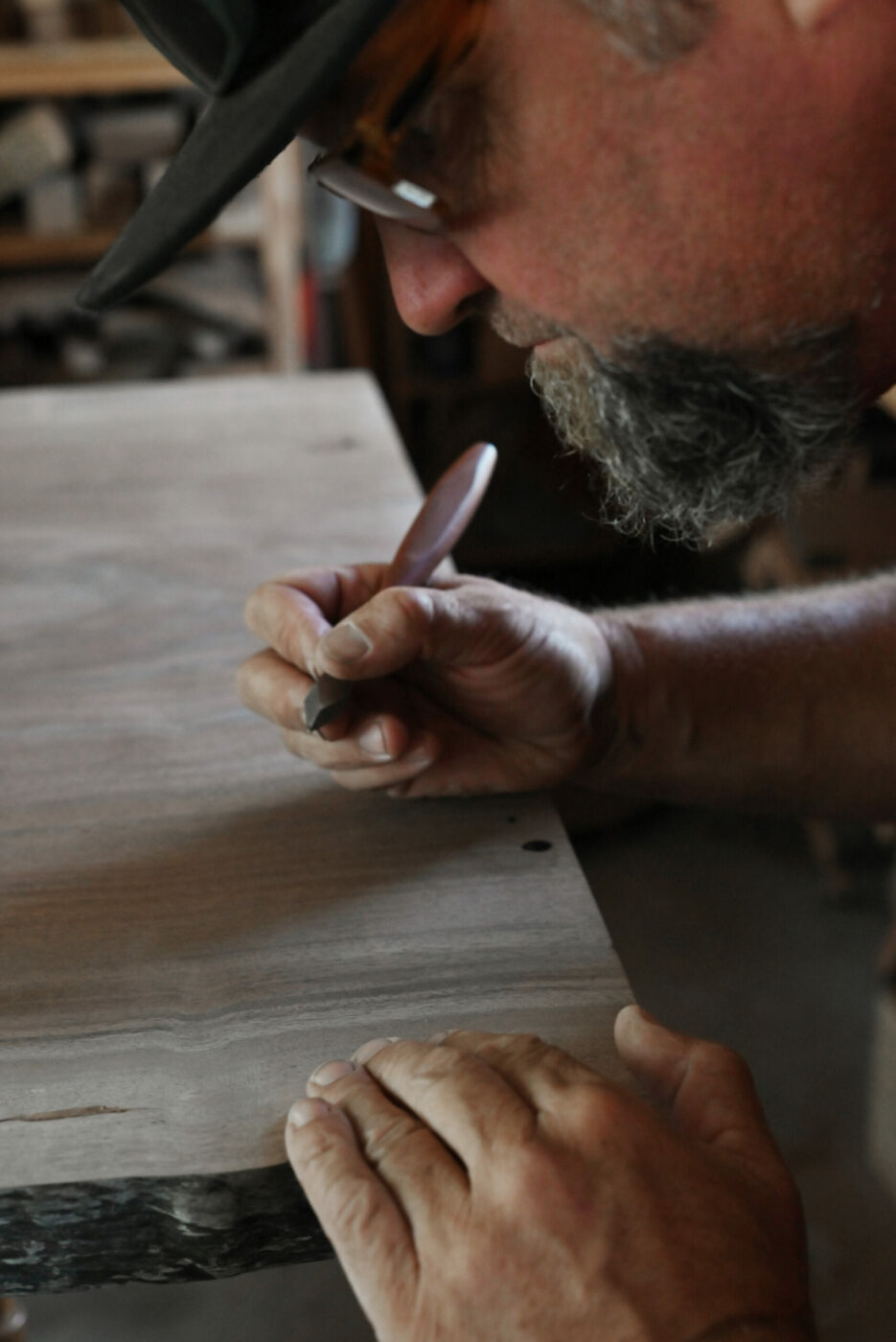
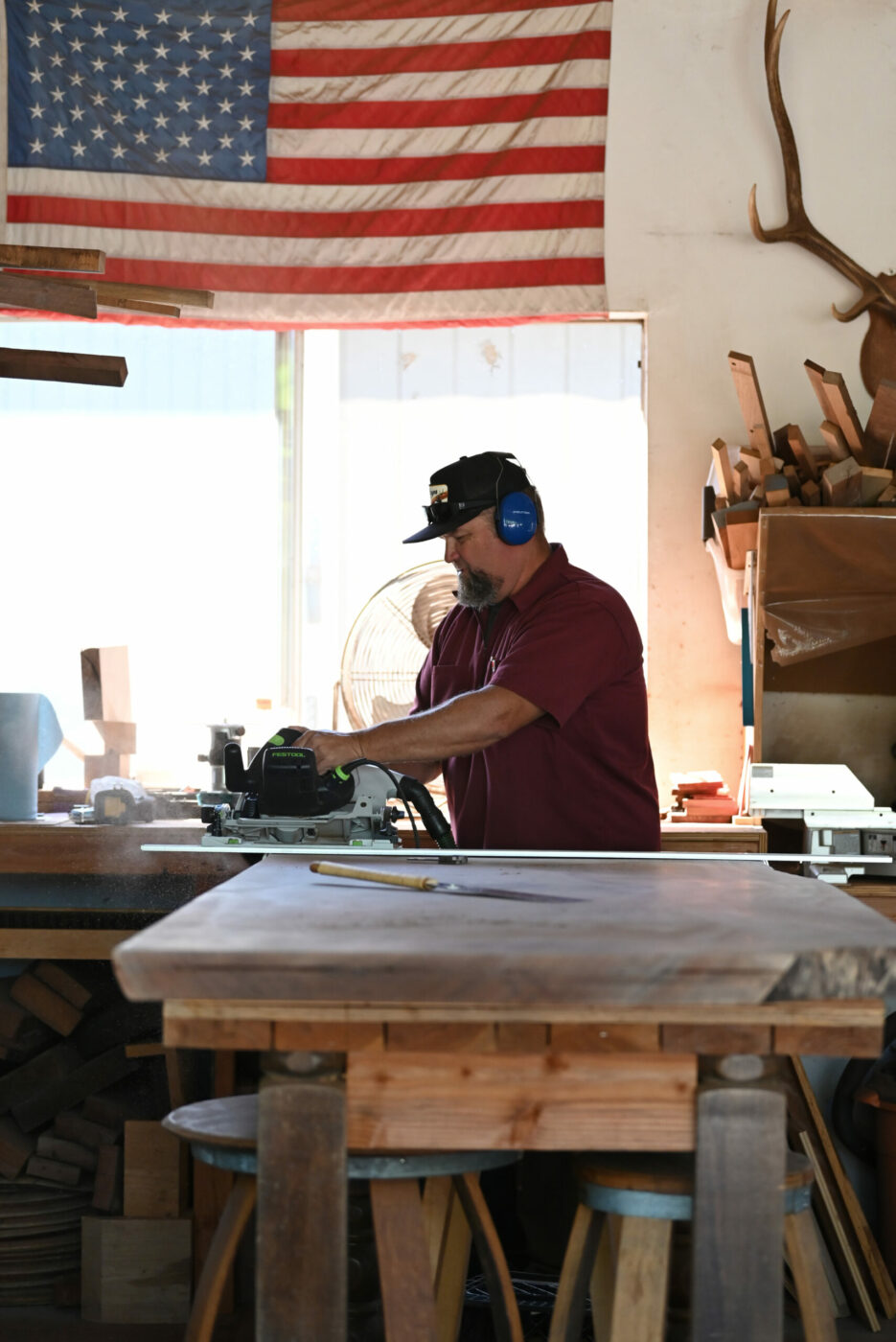
For two decades, Almos worked as a foreman at a heavy equipment operator. Woodworking was a side gig, and he occasionally sold small pieces at farmers markets or craft fairs. “I had built some furniture, including chairs, bistro sets, and lazy Susans, and then went to the farmers market to ask if I could set up a booth,” he remembers. “That first day I sold everything, and it really showed me what I was supposed to be doing.”
In 2011, he took a leap and founded his one-man company, with the goal of selling his furniture and working on larger pieces by commission. At first, he operated out of his home. Three years later, he relocated to a much larger workshop with more room to store scavenged and found materials. While he remains a one-man show, he occasionally has some help from his mom and his 9-year-old son.
Almos keeps a library of wood along one wall of his workshop, with slabs of upcycled walnut, old-growth redwood, red gum eucalyptus, maple, cedar, madrone, oak, and rare Monterey cypress. “Most people would use this wood for firewood, but I turn it into tables,” he says. Almost all the wood he works with is from Sonoma County. Almos often receives calls from homeowners or builders looking to clear land for new developments. Burnt trees from the devastating 2017 Tubbs fire provided a valuable addition to his collection.
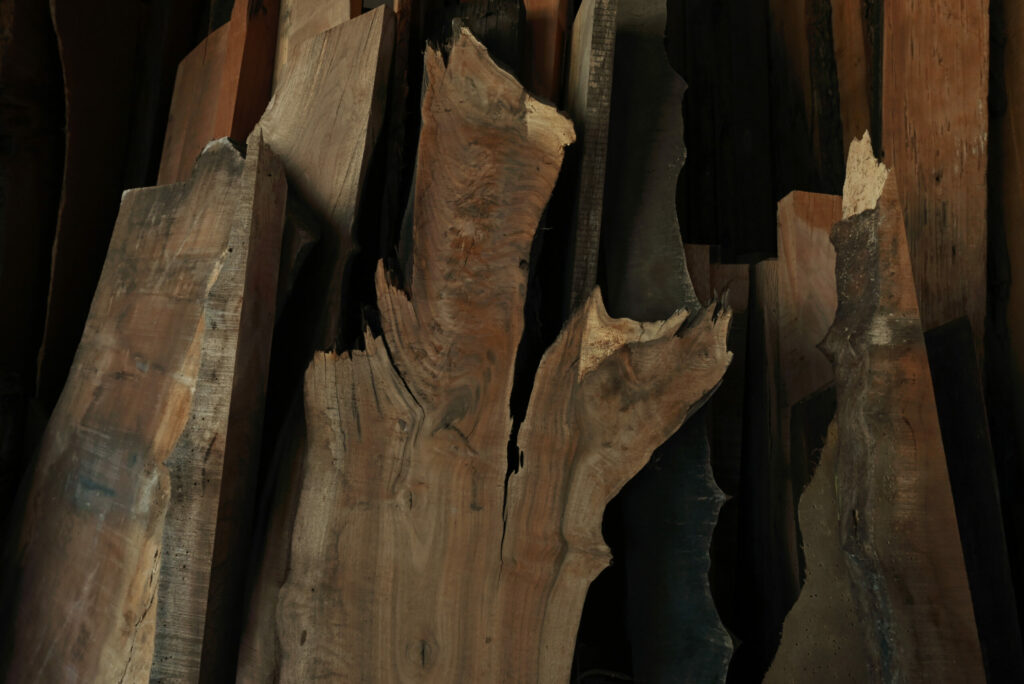
After a lifetime around wood, Jesse sticks to a simple message, modestly playing down his role as a rescuer of rare local wood. On his Facebook page, he shares stories of majestic Sonoma County redwood trees felled to build cities, infrastructure, bridges, and schools alongside 1880s-era photos of loggers standing tiny among the towering. He says he develops a deep attachment to much of the material he acquires. Walnut is his favorite—a wood he says can appear dull brown and unremarkable at first glance, but a great deal of patience, not to mention hours of sanding, oiling, and staining, is transformed into highly individual pieces, each with a story to tell.
These trees, this wood, from these hills holds a special, almost mythical place in Almos’s heart.
“They have a third life, I call it,” he explains. “First, they were massive trees, then big wine tanks, and now they become tables where people sit around and tell stories.”
Sonoma Woodworks, open by appointment. 707-975-6687, sonomawoodworks.com








